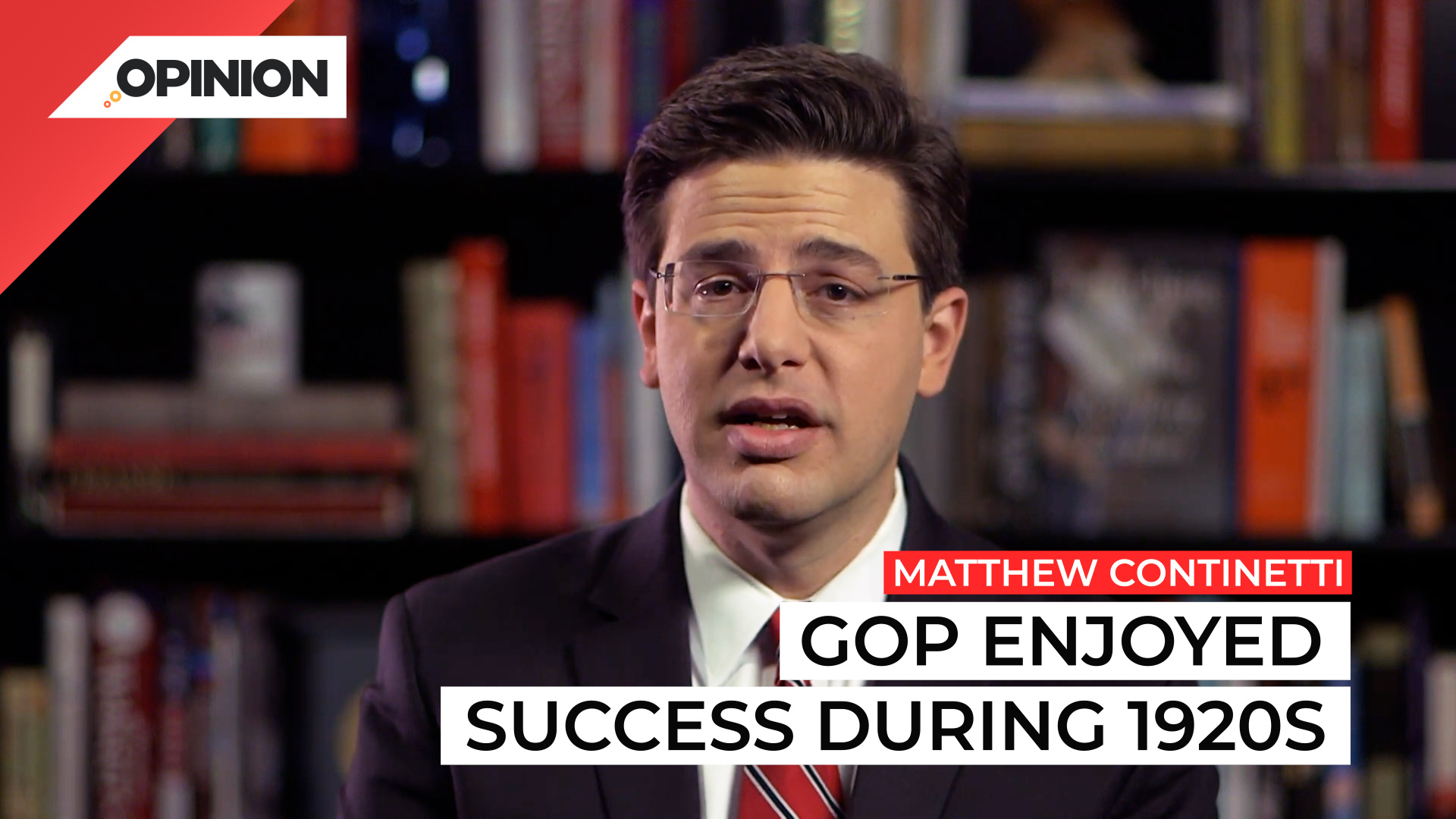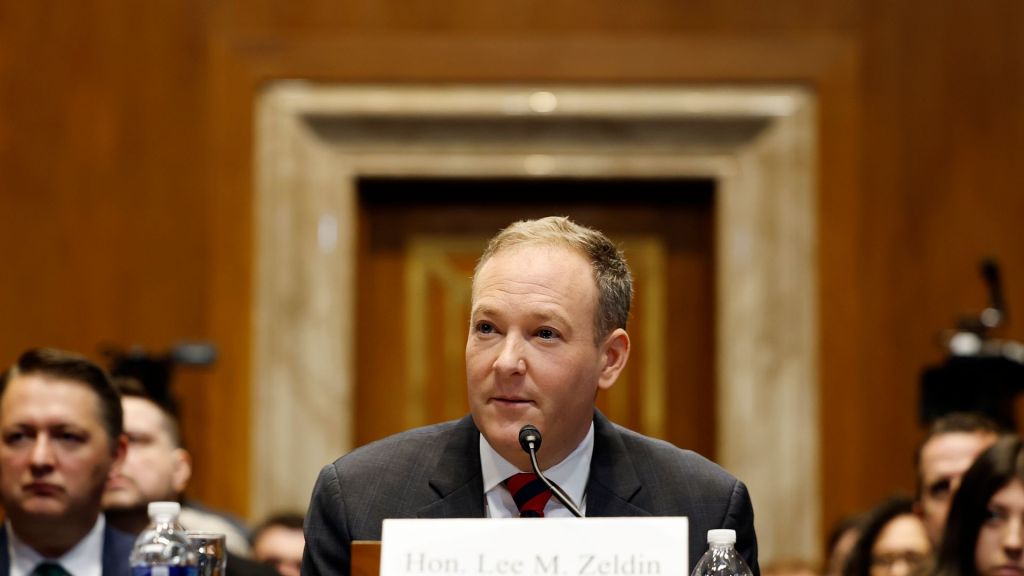
Commentary
-
Our commentary partners will help you reach your own conclusions on complex topics.
It’s hard to think of two presidents with less in common than Calvin Coolidge and Donald Trump. For one thing, Coolidge held a variety of public offices before becoming president on Aug. 2, 1923. Mr. Trump had no government or military experience before his inauguration in 2017.
Yet these personal differences obscure important political similarities. Both Coolidge and Trump staked their presidencies on voter satisfaction with broadly shared prosperity. Both supported restricting immigration into the United States. Both wanted to protect American industry from foreign competition. Both wanted to avoid overseas entanglements.
As I explain in my new book, The Right: The Hundred Year War for American Conservatism, Trump’s views now dominate the Republican Party. For anyone who grew up with the GOP of Ronald Reagan, this can be strange and bewildering.
But in many respects, it’s a return to the principles of the 1920s, of Coolidge and his predecessor Warren Harding. Their conservatism appealed to an American electorate that had soured on its experiences with the Progressive movement and with World War One.
“Our supreme task,” President Harding said in his inaugural address, “is the resumption of our onward, normal way.”
For Harding, “normalcy” meant nation-building at home. He raised tariffs and restricted imports. And he venerated the Constitution.
Calvin Coolidge did not depart from this constitutionalist path. To Coolidge, the Declaration of Independence and the Constitution offered the last words in a centuries-long argument over popular sovereignty. Coolidge argued that success in self-government was related to religious faith. Political freedom depended on traditional morality and self-control. He called on Americans to preserve the inheritance of the Founders.
Harding and Coolidge’s conservatism was delegitimized by the crises that followed their presidencies. The Great Depression robbed the right of its claim to promoting prosperity. Then World War II discredited the right’s noninterventionist foreign policy. What emerged from the rubble was a postwar conservative movement that embraced alliances, military intervention, forward defense, free trade and open immigration to defeat communism and fuel economic growth. This postwar conservative internationalism may have been an aberration.
Today, the GOP is reverting to its pre-World War II identity as the party of low taxes, economic protection, restricted immigration, wariness of foreign intervention and religious piety. This retro-Republicanism could turn out to be a popular mix, but history shows that it is also a combustible one. In its protectionism, resistance to immigration, religiosity, and antipathy to foreign entanglements, Donald Trump’s Make America Great Again movement resembles the conservatism of the 1920s—with one significant difference.
In the 1920s, the right was in charge. A century later, in the early 2020s, the right has been driven from power at the federal level. It has been locked out of the commanding heights of American culture. Its rhetoric has often veered into conspiracy theory.
Cultural estrangement and economic insecurity have made today’s Republicans much more open to government intervention in the market than their forebears. Harding and Coolidge stood for “normalcy” and “Americanism.”
Even when he was president, however, Trump stood outside the system. Trump did not maintain the status quo. He challenged it.
As the GOP has returned to its early 20th-century roots, it has struggled to persuade Americans that its agenda and spokesmen are within the mainstream. The right has benefited more from the false steps of its opponents than the popularity of its own ideas and leading figures.
All of which might give Republicans pause as they embrace the changes brought about by Donald Trump and look forward to the midterm election this November.
After all, the GOP enjoyed tremendous success during the 1920s—and then spent the next 40 years in the political wilderness.
-
New Orleans attack shows US must put ISIS on defense
At least 15 people have now died following what investigators say was a lone-wolf terrorist attack carried out by a U.S. Army veteran in New Orleans over New Year’s. The suspect publicly declared his allegiance to ISIS prior to the attack, and he flew an ISIS flag from the rented vehicle he used to run… -
The Trump honeymoon will not last
When President-elect Donald Trump won the presidency in 2016, his victory was marked by celebration but also immediate backlash, including widespread protests and the rise of the “resistance” movement. Trump’s job approval rating never exceeded 47%, making him the first president in history to never reach 50% approval in the Gallup poll during his term.… -
Why the presidential election result wasn’t even close
President-elect Donald Trump is the first person in over 120 years to be elected to two non-consecutive presidential terms. He swept every swing state and made significant gains among Hispanic voters, narrowing Democratic margins in traditionally blue states like Virginia and New Jersey. He won the Electoral College decisively, although the national popular vote margin… -
Joe Biden’s failed foreign policy legacy
On Wednesday, Oct. 16, Democratic presidential nominee Kamala Harris faced tough questioning on Fox News, where host Bret Baier pressed her on immigration, the economy and the Biden administration. When asked what she would do differently from President Biden, Harris responded, “Let me be very clear, my presidency will not be a continuation of Joe… -
Kamala Harris’ secret is her mystique
Vice President Kamala Harris’s rise in popularity has been strong and swift, reassuring many Democrats while provoking concern or confusion from Republicans. Her rise was solidified further after her debate against former President Donald Trump, which went poorly for the Republican nominee but resulted in more funding and endorsements for Harris — including from pop…
Latest Opinions
-
 Getty Images
Getty Images
New England city votes to become a sanctuary for transgender community
-
 U.S. Army photo by Michel Sauret
U.S. Army photo by Michel Sauret
Team USA athletes making life-changing memories at Invictus 2025
-
 Getty Images
Getty Images
China recruiting ‘planetary defense’ unit to protect Earth from 2032 asteroid
-
 Getty Images
Getty Images
Plans to buy armored Tesla vehicles suddenly gone from State Department list
-
 UAF
UAF
Ukraine unveils underground ‘Hell-making’ missile facility
Popular Opinions
-
In addition to the facts, we believe it’s vital to hear perspectives from all sides of the political spectrum.






